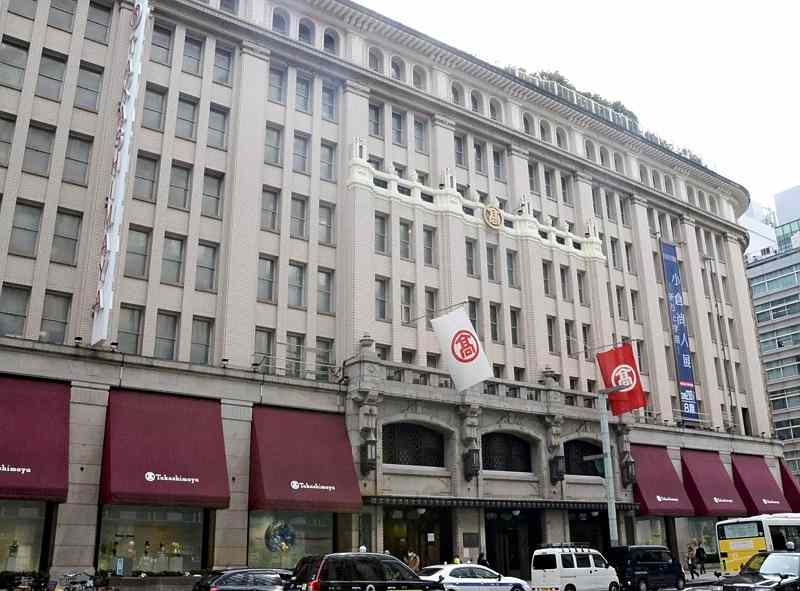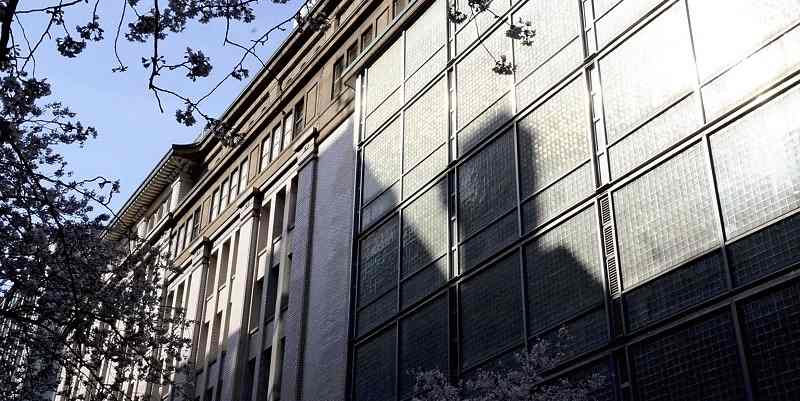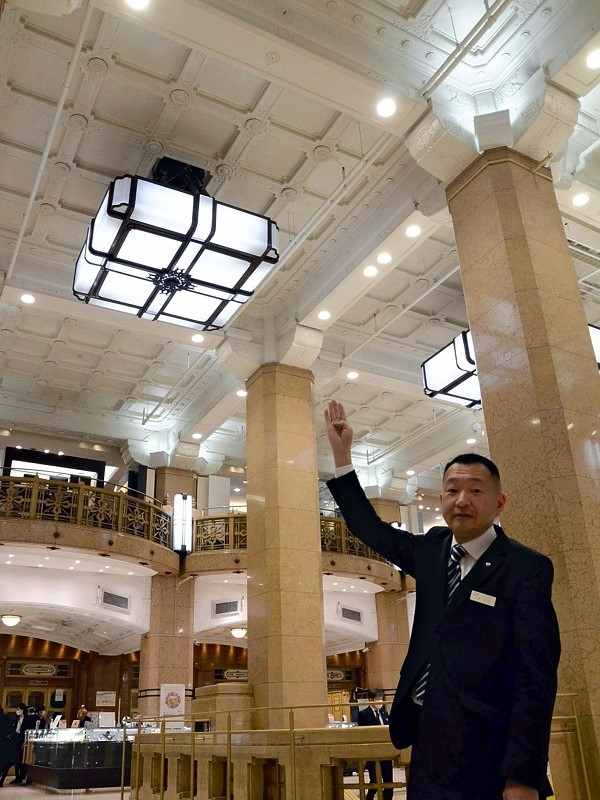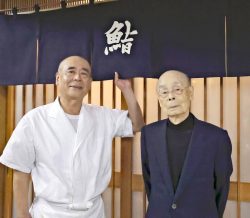
The exterior of the Nihombashi Takashimaya Shopping Center department store complex in Chuo Ward, Tokyo
18:17 JST, April 20, 2021
The Nihombashi district in Chuo Ward, Tokyo, is scattered with a few buildings that survived World War II — and the main building of Nihombashi Takashimaya Shopping Center is one of them.
The department store building, originally constructed in 1933, has gone through extensive changes and still welcomes customers day after day.
About one-third of the current structure on the western side is the oldest part of the building. The design of the building won first place in an architecture competition on the theme of “modern architecture based on Oriental tastes.” The architect was Teitaro Takahashi (1892-1970), who also designed prominent buildings that include the Gakushikaikan building in Chiyoda Ward, Tokyo.
The Takashimaya building is a stately structure in a Western style with tiles and marble, but it is sprinkled with traditional Japanese-style designs as well, such as the grid-style ceiling of the atrium that serves as the main entrance hall. Such a ceiling is often seen in Buddhist temples in Japan.
After the war, the building was extended in four steps until 1965, all designed by Togo Murano (1891-1984), an architect whose works include the Nissay Hibiya Building in Chiyoda Ward.

The right-hand section with glass blocks was designed by Togo Murano up through the 1960s.
The left-hand section is the original building from 1933 designed by Teitaro Takahashi.
For the Takashimaya extension work, Murano maintained a harmonious balance between Takahashi’s design and more modern architectural methods, such as the use of glass blocks on the walls.

Kazuhiko Kishi gestures toward the ceiling of the atrium at Nihombashi Takashimaya Shopping Center. The square lights were deigned by Togo Murano to match the ceiling, which has not been altered since the completion of the original building.
In 2009, the building became the first department store structure to be designated by the government as an important cultural property of the country for being an architectural work that is an inseparable entity.
Following the recognition, Takashimaya started a tour to introduce must-see spots in the building. Kazuhiko Kishi, 53, is currently one of the tour guides. He has worked at the store several times before. When he returned to the main building in 2019 after working at another Takashimaya store, “The awe-inspiring atmosphere renewed the thrill I’ve always felt for the building,” he said.
The chandeliers in the atrium were given to the government during the war, and the replacement lighting designed by Murano is in use now.
Many years ago, the department stores kept an elephant on its roof garden to show to customers. A house inspired by the shape of an elephant in commemoration of this history was subsequently built in the garden.
The tour has been suspended due to the pandemic.
“A historical building has been brilliantly preserved thanks to the efforts of our predecessors,” Kishi said. He is eagerly awaiting the day when the tour resumes. “I’d like to continue passing down the knowledge of such worth to more people.”
Related Tags
"Features" POPULAR ARTICLE
-

Sanrio to Open Museum in Yamanashi Pref. Dedicated to Founder, Exhibits Include Hello Kitty, Other Characters
-

Legendary Sushi Chef Jiro Ono Turns 100: ‘I Have No Regrets’
-

Autumn Foliage Surrounds Visitors to Tokyo’s Showa Kinen Park
-

My Daughter No Longer Speaks to Me, But I Want to See Her and My Grandchild
-

Kumamoto: Public Bath Refurbished as Library Where You Can Chat, Take Photos
JN ACCESS RANKING
-

Keidanren Chairman Yoshinobu Tsutsui Visits Kashiwazaki-Kariwa Nuclear Power Plant; Inspects New Emergency Safety System
-

Imports of Rare Earths from China Facing Delays, May Be Caused by Deterioration of Japan-China Relations
-

University of Tokyo Professor Discusses Japanese Economic Security in Interview Ahead of Forum
-

Japan Pulls out of Vietnam Nuclear Project, Complicating Hanoi’s Power Plans
-

Govt Aims to Expand NISA Program Lineup, Abolish Age Restriction























